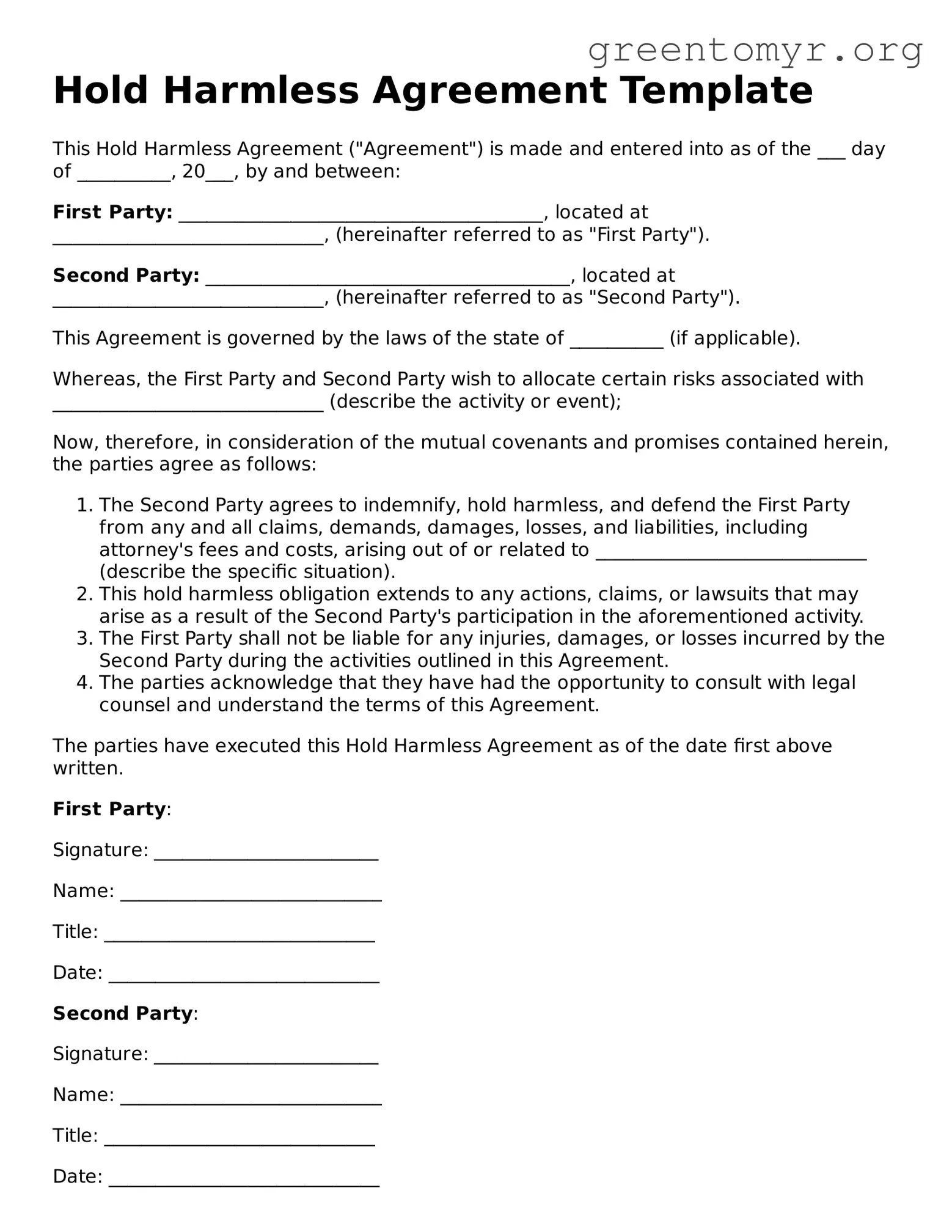Hold Harmless Agreement Template
This Hold Harmless Agreement ("Agreement") is made and entered into as of the ___ day of __________, 20___, by and between:
First Party: _______________________________________, located at _____________________________, (hereinafter referred to as "First Party").
Second Party: _______________________________________, located at _____________________________, (hereinafter referred to as "Second Party").
This Agreement is governed by the laws of the state of __________ (if applicable).
Whereas, the First Party and Second Party wish to allocate certain risks associated with _____________________________ (describe the activity or event);
Now, therefore, in consideration of the mutual covenants and promises contained herein, the parties agree as follows:
- The Second Party agrees to indemnify, hold harmless, and defend the First Party from any and all claims, demands, damages, losses, and liabilities, including attorney's fees and costs, arising out of or related to _____________________________ (describe the specific situation).
- This hold harmless obligation extends to any actions, claims, or lawsuits that may arise as a result of the Second Party's participation in the aforementioned activity.
- The First Party shall not be liable for any injuries, damages, or losses incurred by the Second Party during the activities outlined in this Agreement.
- The parties acknowledge that they have had the opportunity to consult with legal counsel and understand the terms of this Agreement.
The parties have executed this Hold Harmless Agreement as of the date first above written.
First Party:
Signature: ________________________
Name: ____________________________
Title: _____________________________
Date: _____________________________
Second Party:
Signature: ________________________
Name: ____________________________
Title: _____________________________
Date: _____________________________
